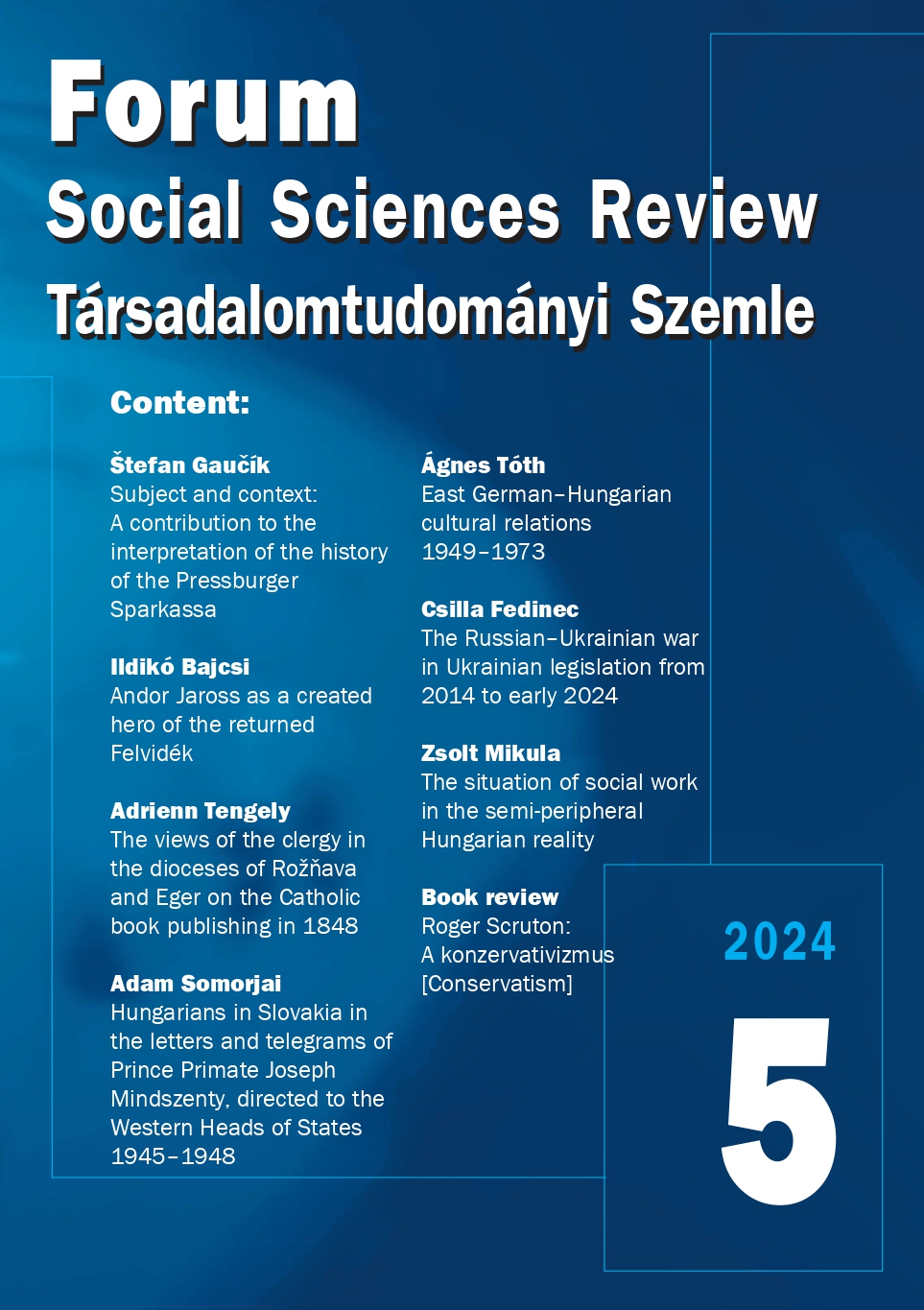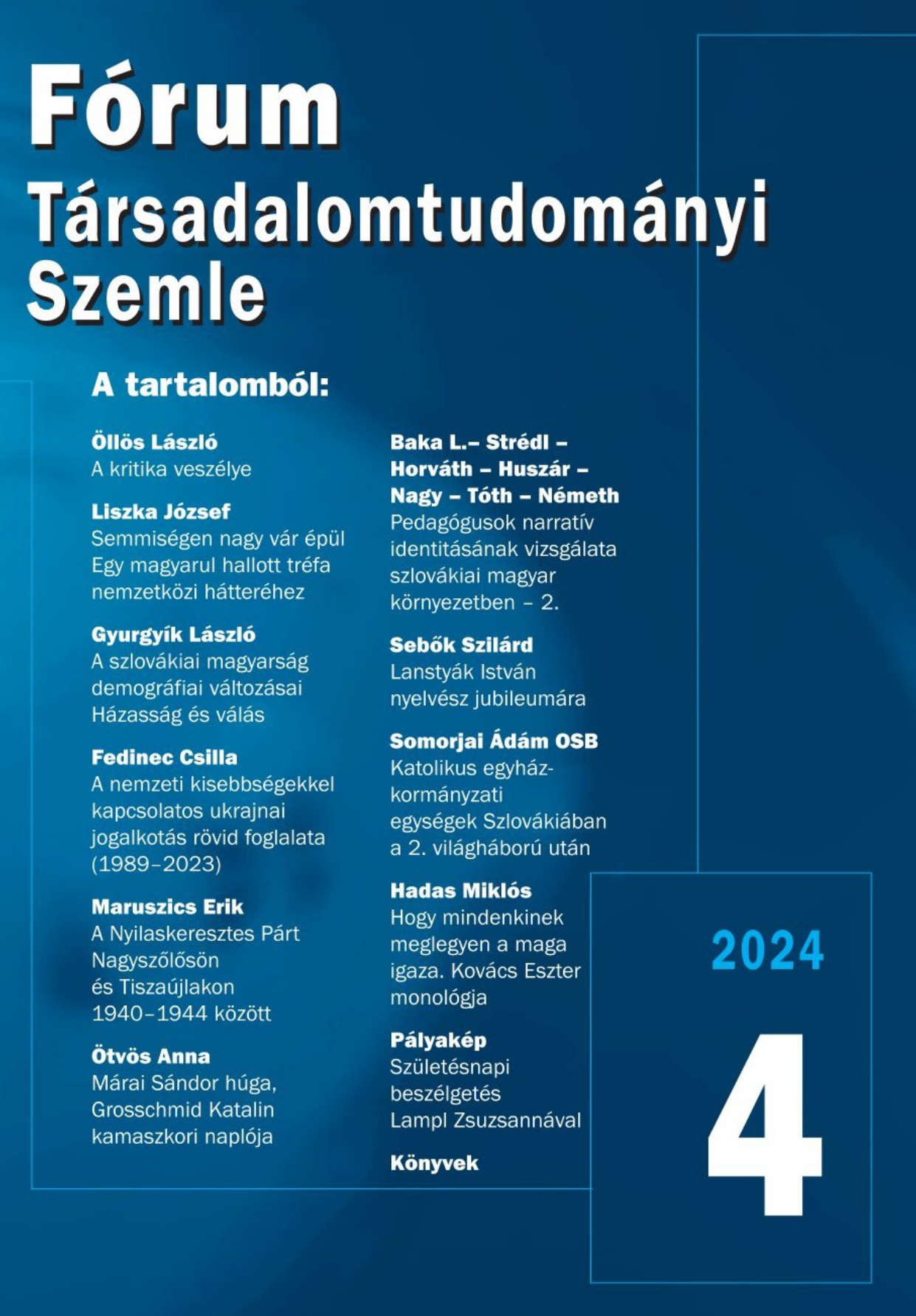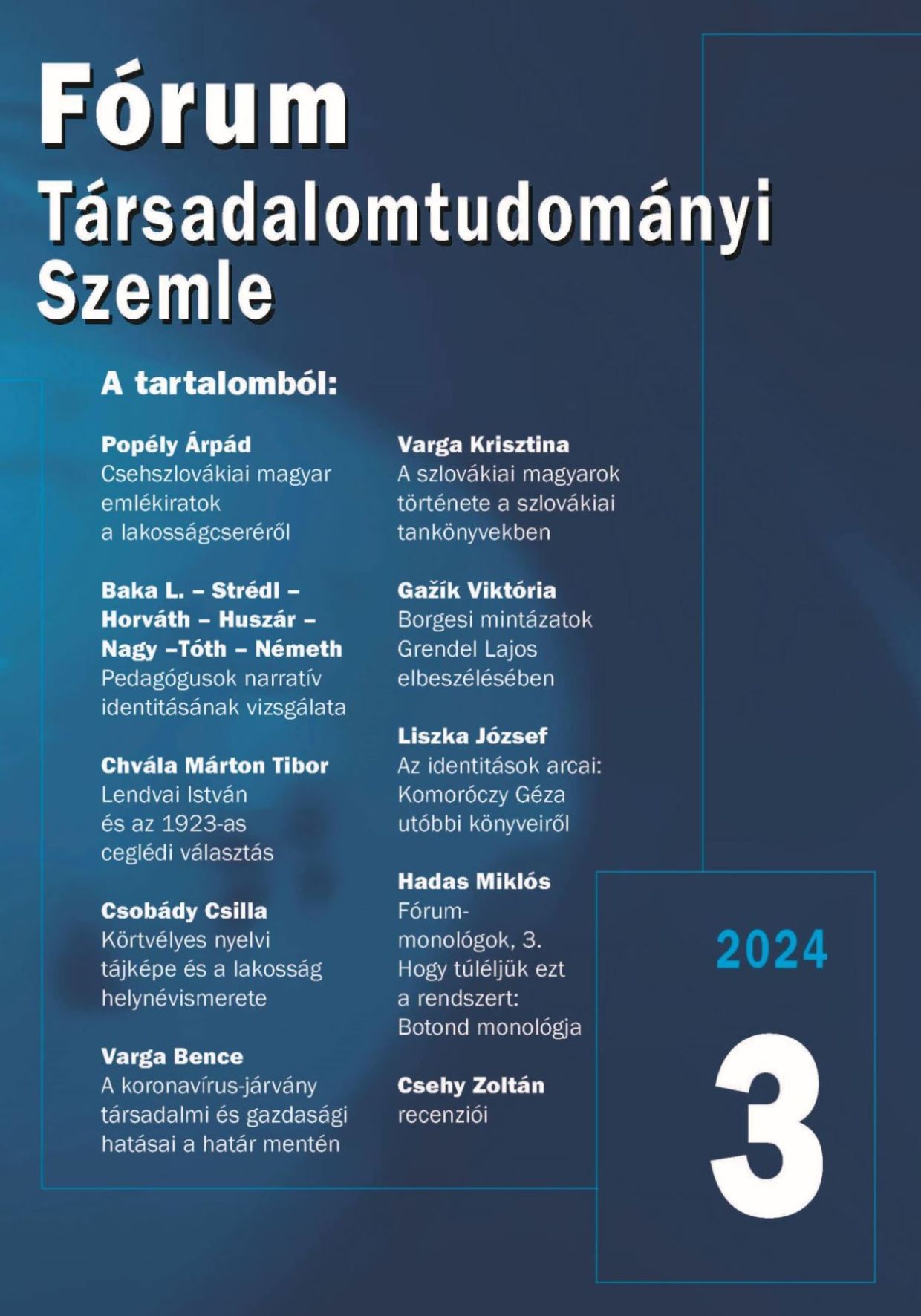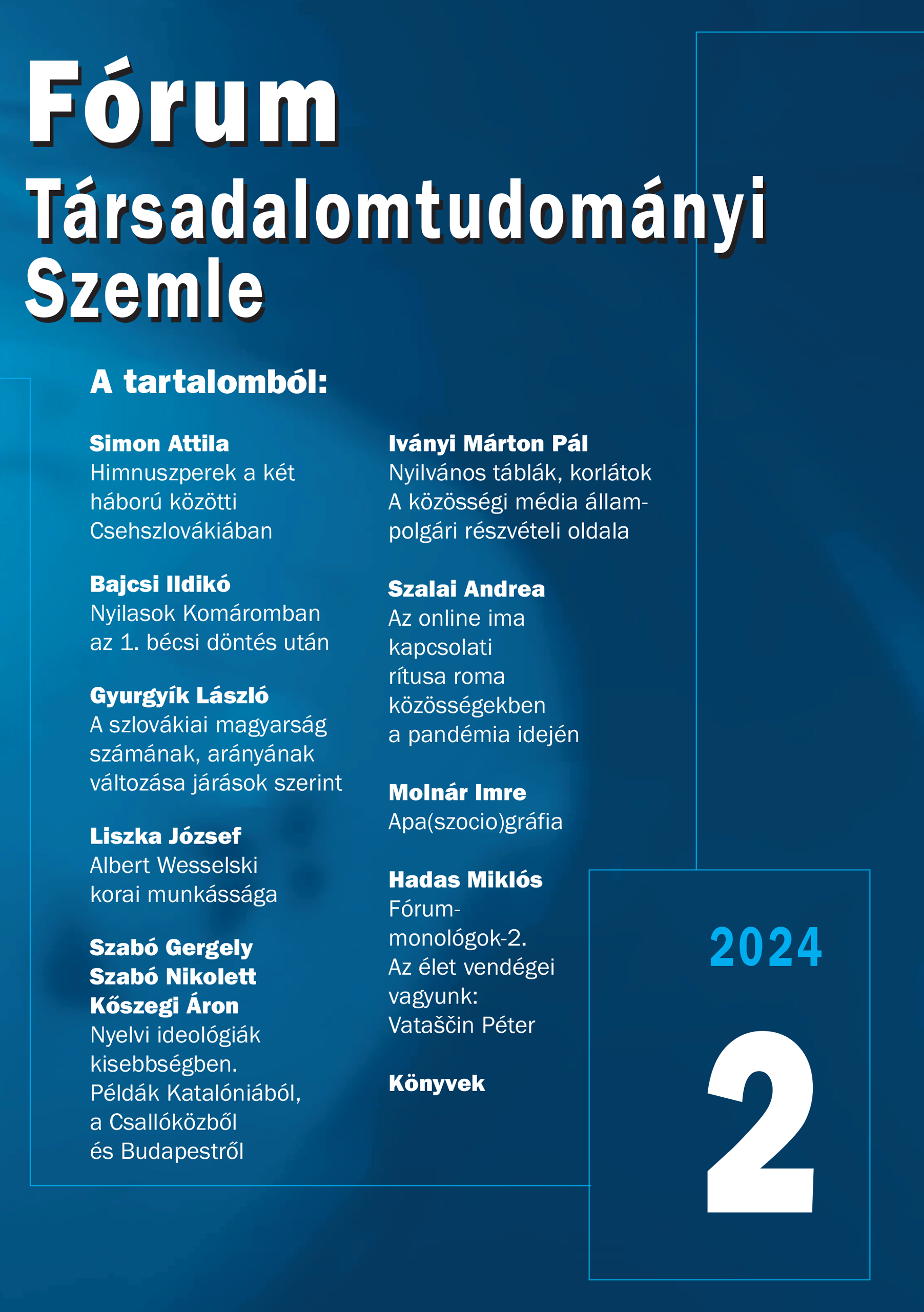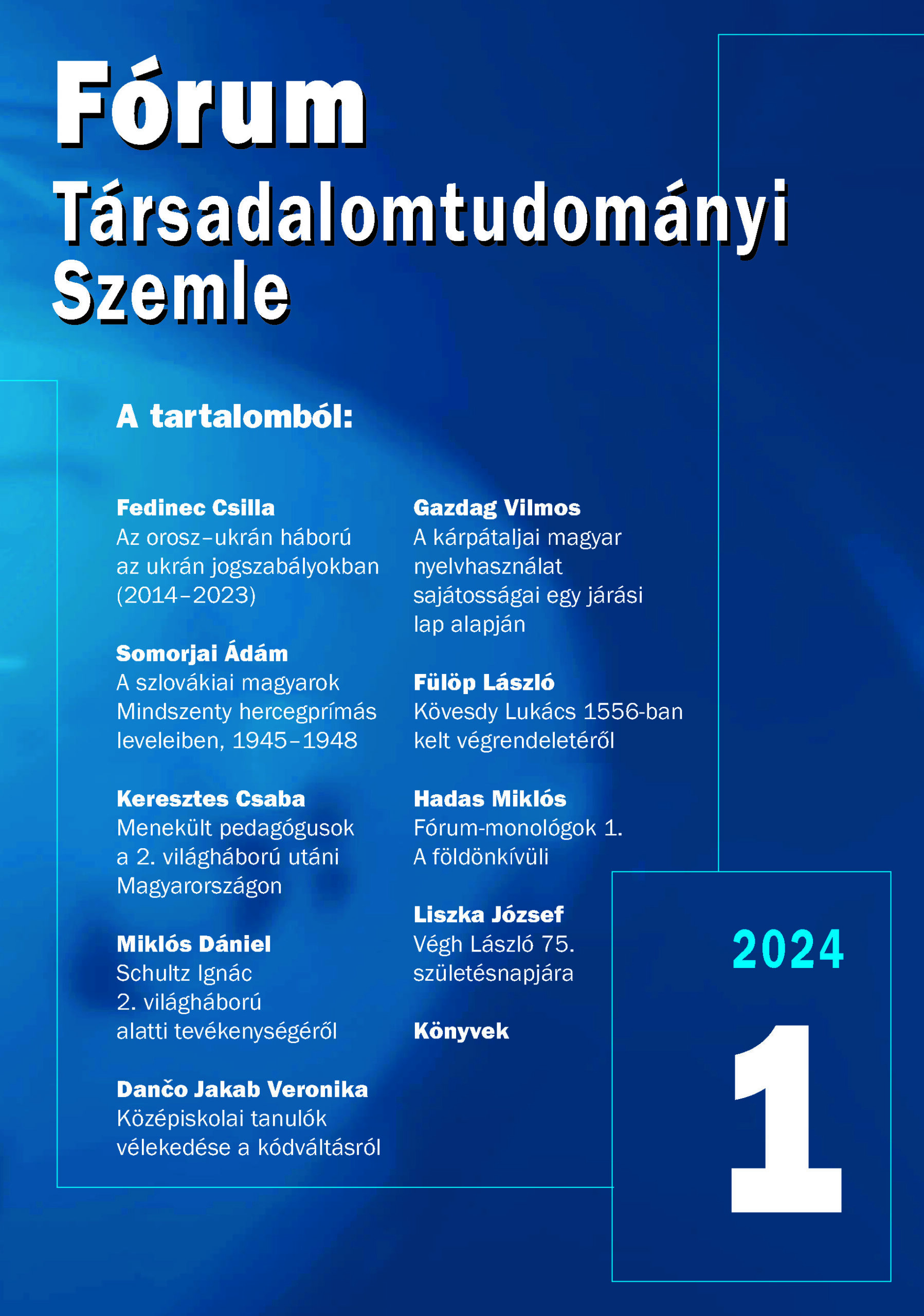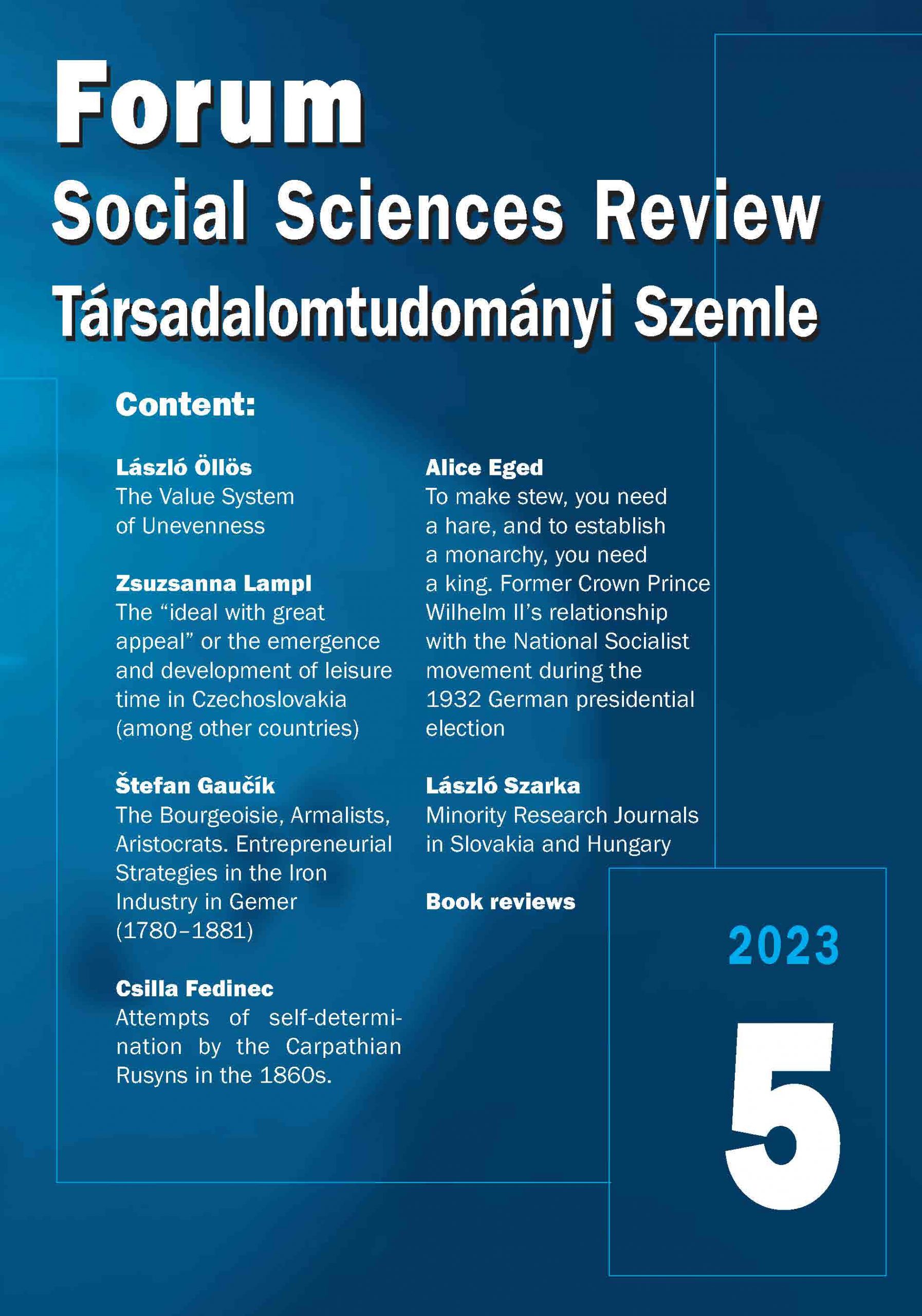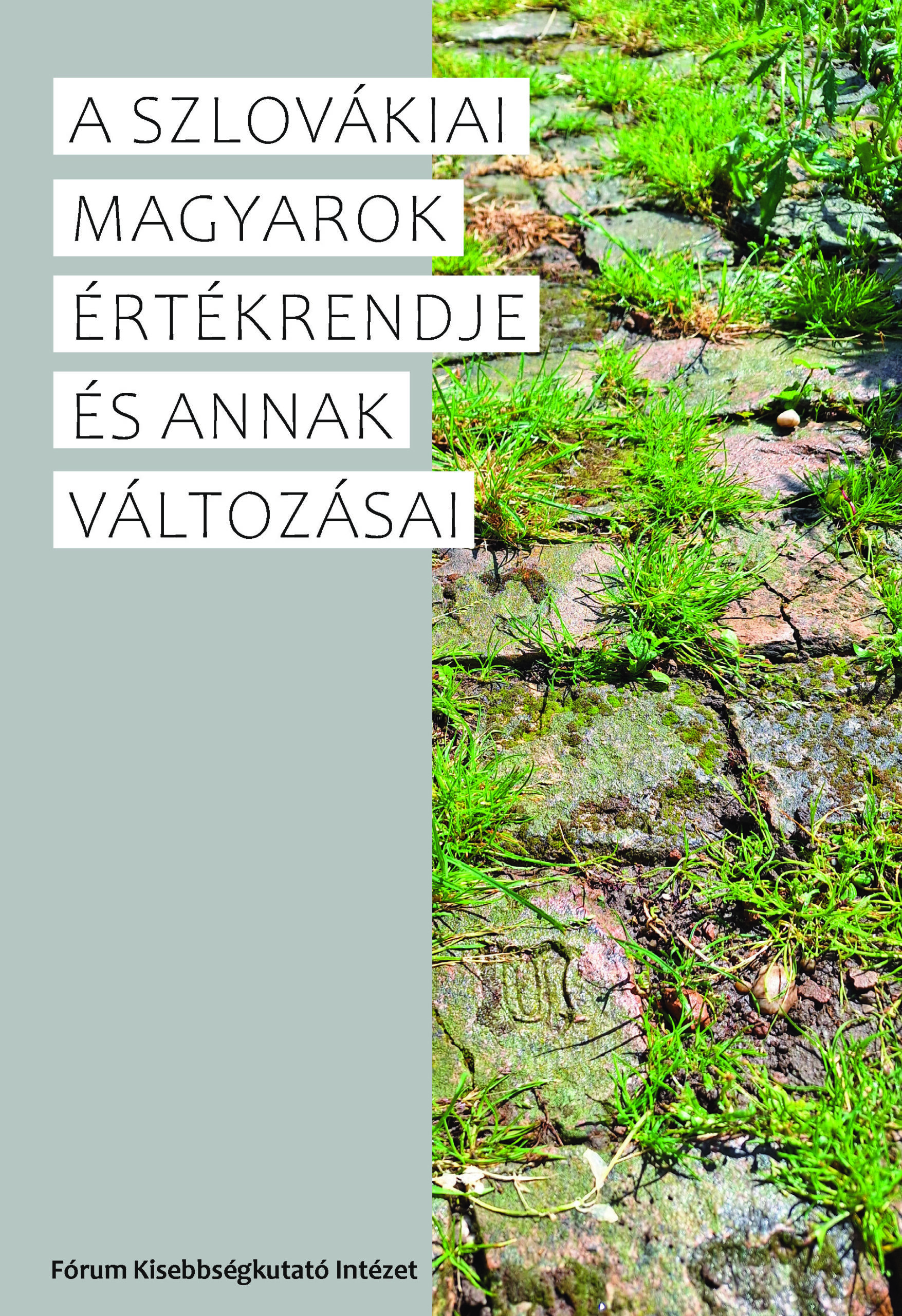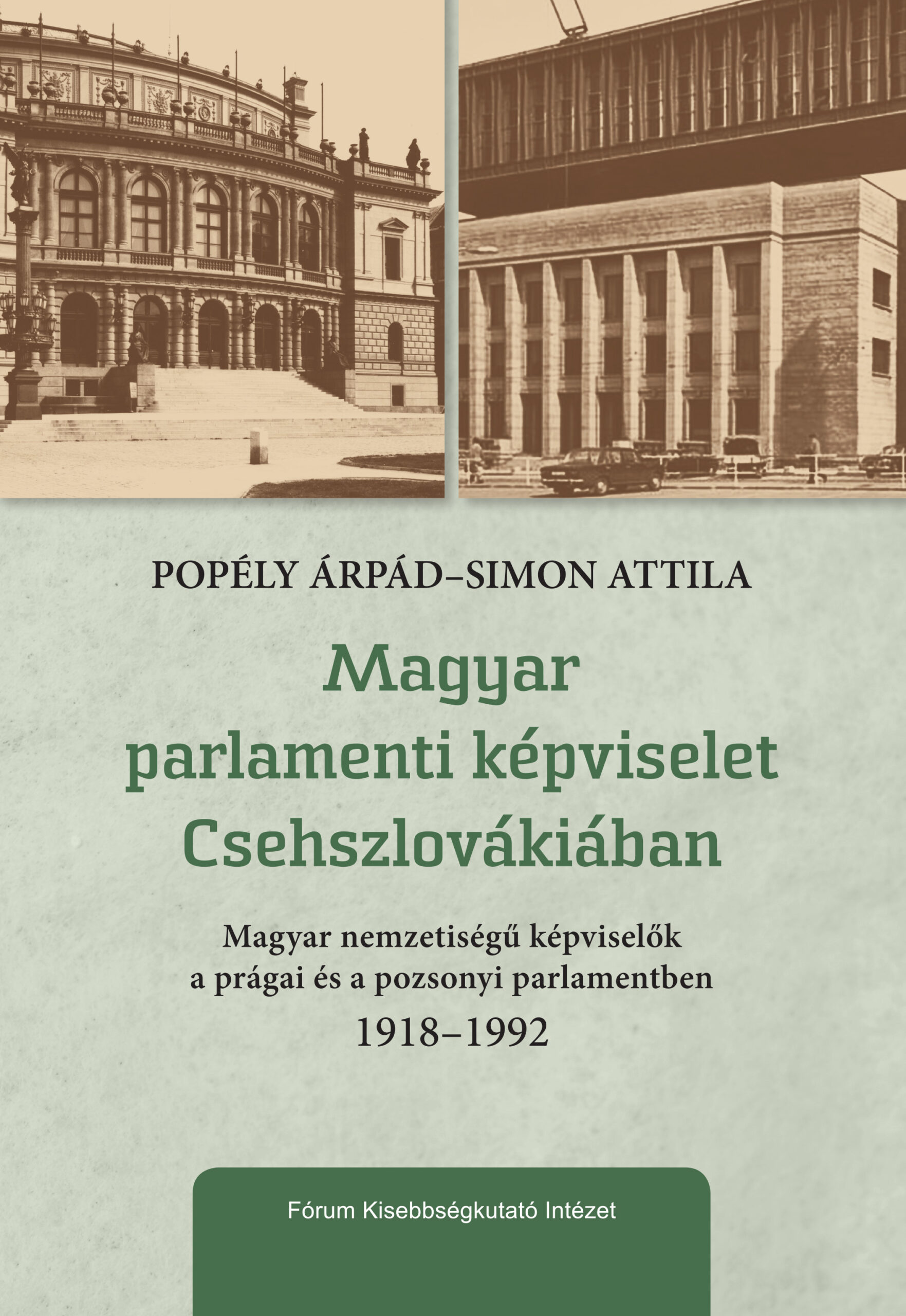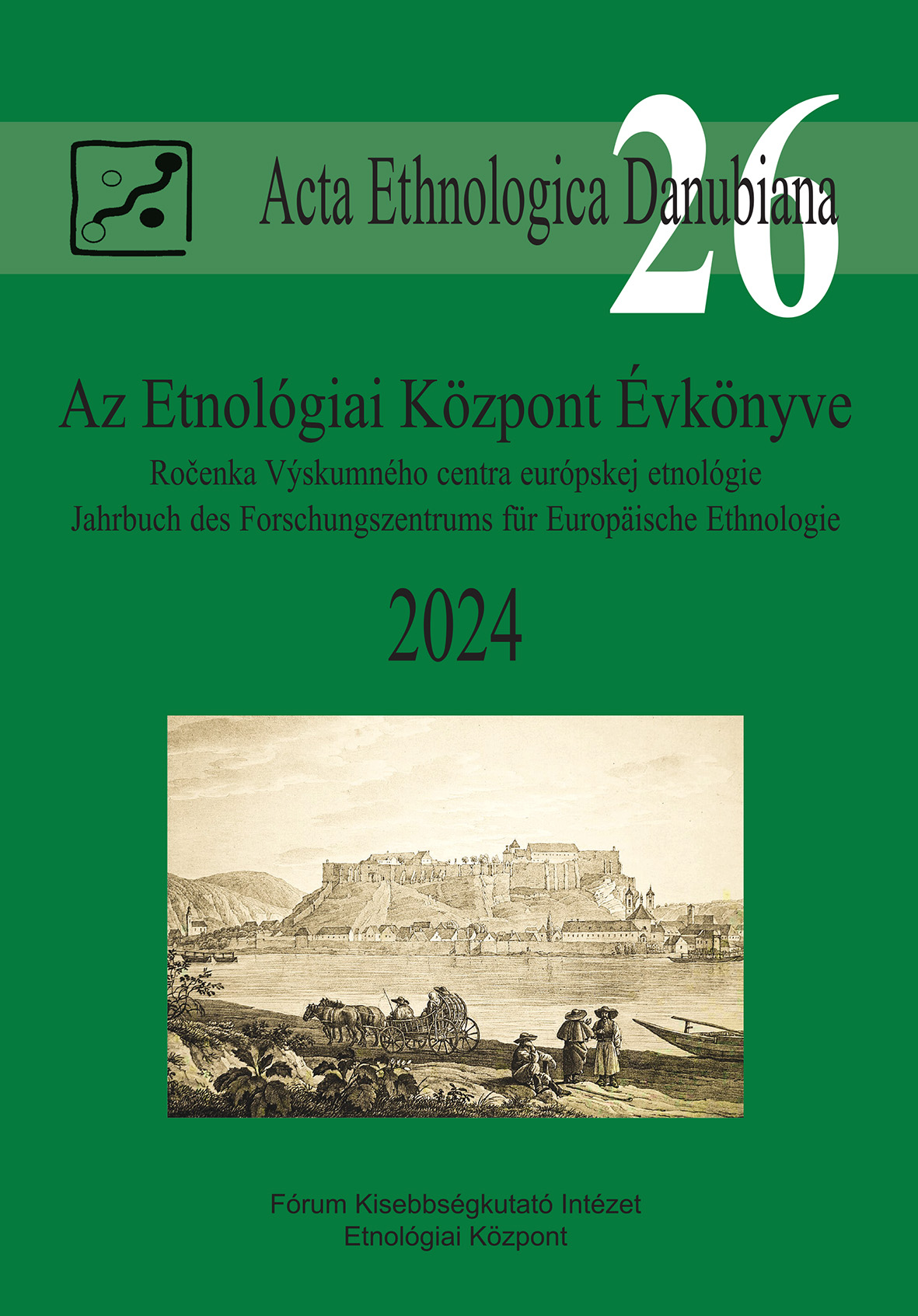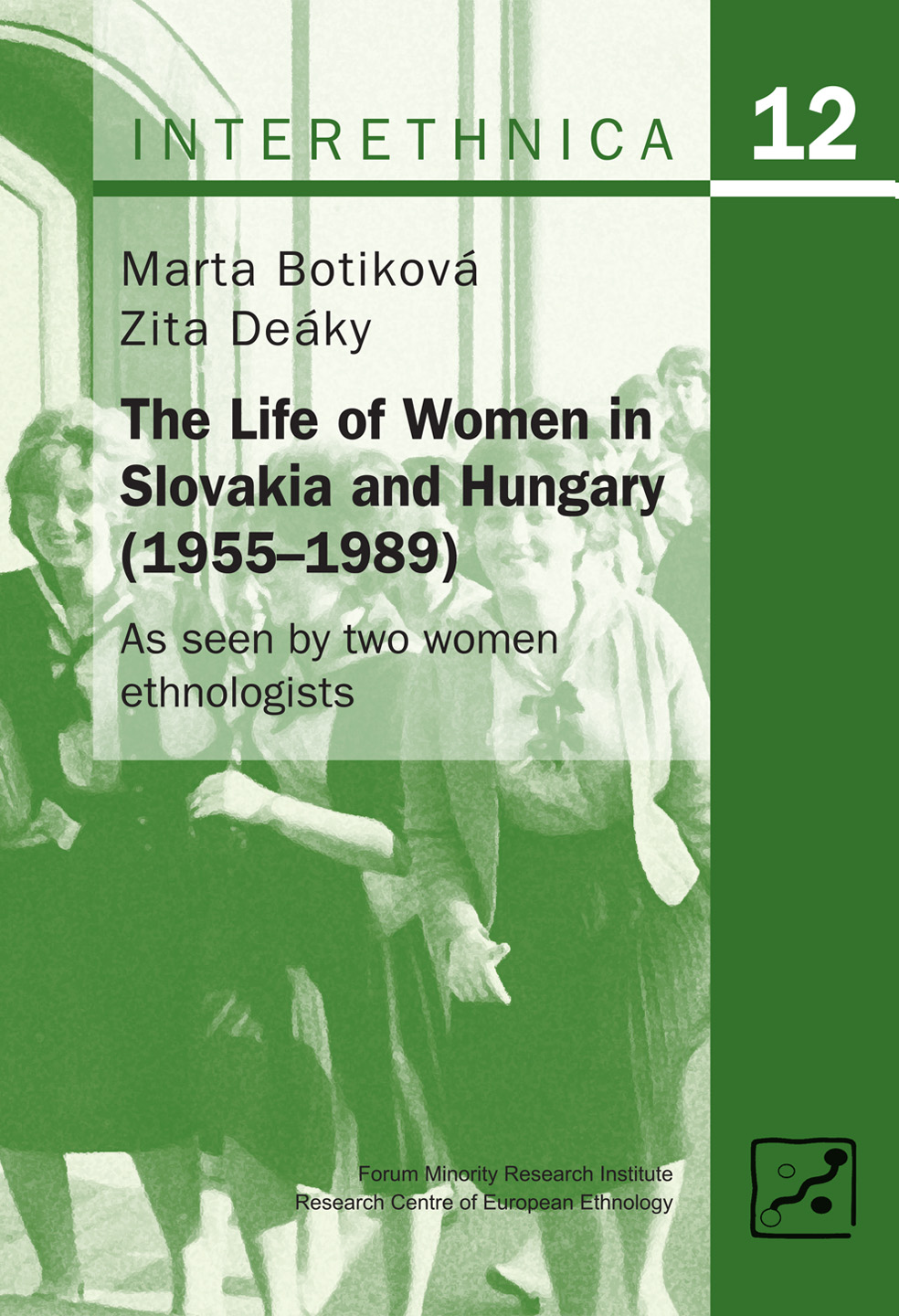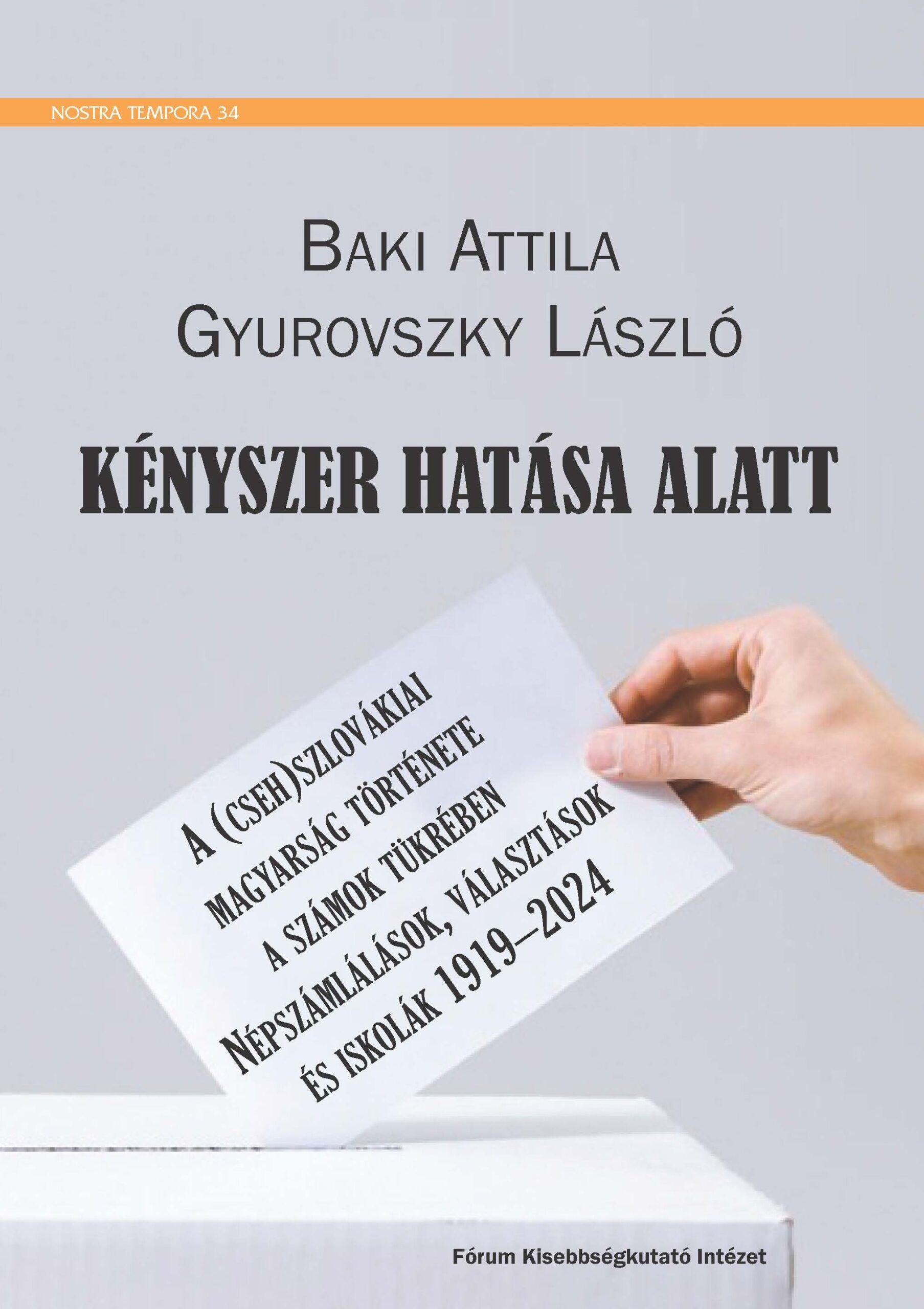FORUM
Social Sciences Review
2025/2
Studies
Reviews

Latest REVIEW
SEARCH in the REVIEW ARCHIVE

Subscribe to our newsletter!
If you would like to be kept up to date with the latest issues of
and other news, please subscribe to our newsletter.
Other Publications
ÖLLÖS LÁSZLÓ et al.: A szlovákiai magyarok értékrendje és annak változásai
A szlovákiai magyarok értékrendje és annak változásai Kötetünk a 2024. november 21–22-én Komáromban megrendezett nemzetközi tudományos k...
POPÉLY ÁRPÁD–SIMON ATTILA: Magyar parlamenti képviselet Csehszlovákiában. Magyar nemzetiségű képviselők a prágai és a pozsonyi parlamentben 1918–1992
Magyar parlamenti képviselet Csehszlovákiában: Magyar nemzetiségű képviselők a prágai és a pozsonyi parlamentben 1918–1992 A szlovákiai ma...
LISZKA JÓZSEF (ed.): Acta Ethnologica Danubiana 26, Az Etnológiai Központ Évkönyve 2024
Acta Ethnologica Danubiana 26, Az Etnológiai Központ Évkönyve 2024 Az évkönyv – amellett, hogy a szlovákiai magyar tájak népi kultúráján...
BOTIKOVÁ, MARTA–DEÁKY, ZITA: The Life of Women in Slovakia and Hungary (1955–1989). As seen by two women ethnologists
The Life of Women in Slovakia and Hungary (1955–1989). As seen by two women ethnologists The two authors ask whether it is possible to generalise th...
BAKI ATTILA – GYUROVSZKY LÁSZLÓ: Kényszer hatása alatt : A (cseh)szlovákiai magyarság története a számok tükrében. Népszámlálások, választások és iskolák 1919–2024
Kényszer hatása alatt : A (cseh)szlovákiai magyarság története a számok tükrében. Népszámlálások, választások és iskolák 1919–2024 ...

